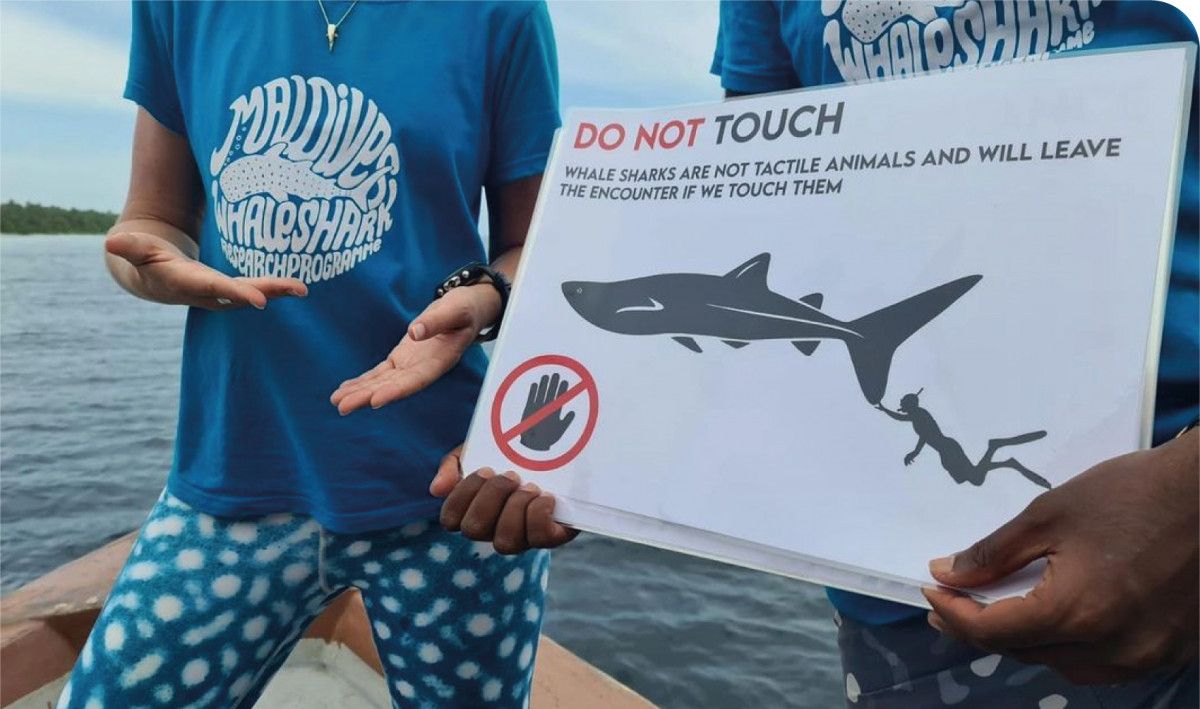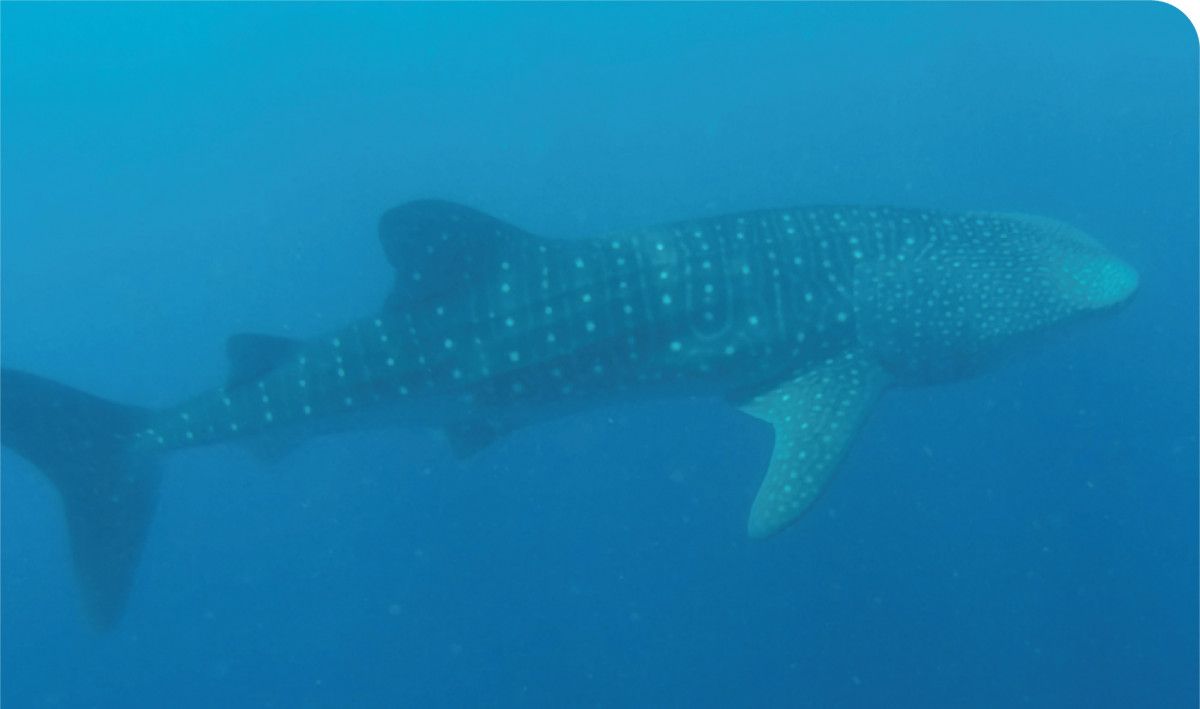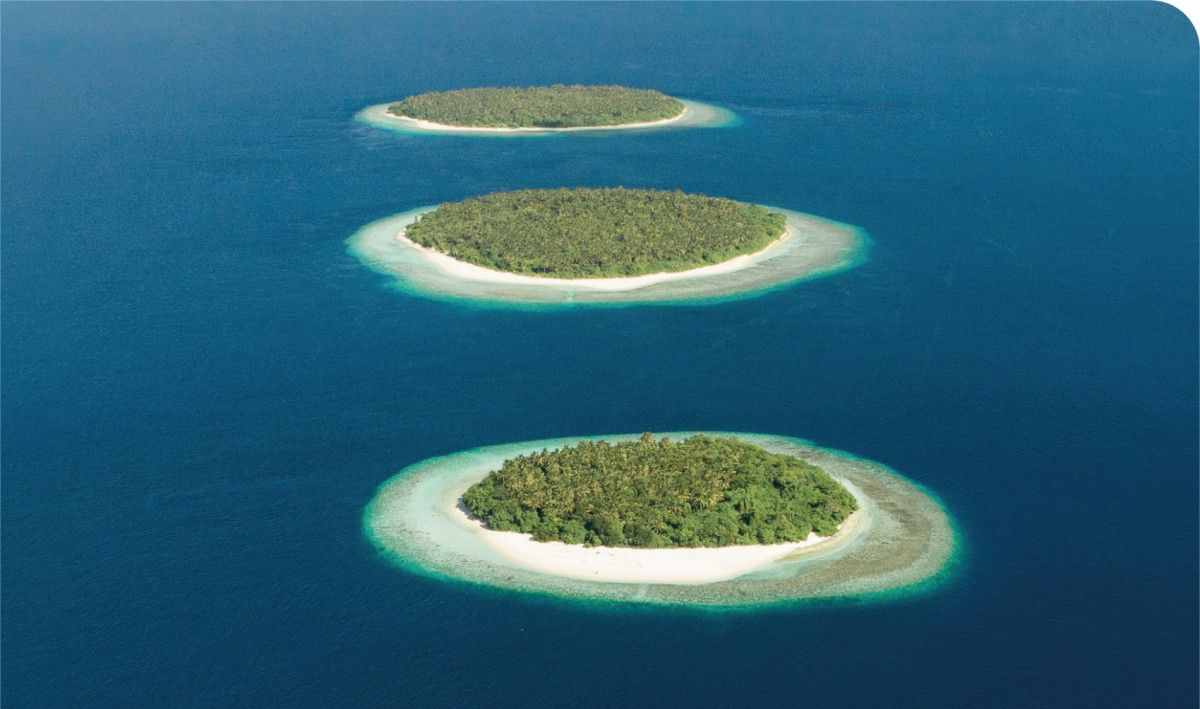Experience
Meet Fernando, Kokko, Maamui & Kuda Kudey - Some of the Maldives’ many beloved Gentle Giants

Photo by sujugasim
The Maldives is blessed with seascapes filled to the brim with life that coexists with us and plays an imperative role in maintaining marine diversity and ecosystems. One of the most important contributors who call our oceans home and frequently visit our waters, gliding majestically and helping us conserve the natural balance of our seas, are Whale Sharks. These gentle giants, locally referred to as “Fehurihi”, are peaceful beings, but often face predicaments which disrupt their natural processes and cause them physical harm and psychological distress from human action.

Photo by, Clairejudepress, maldiveswhalesharkresearch
Protection of these beautiful creatures is at the core of our sustainability and marine conservation efforts, and Maldives Whale Shark Research Project (MWSRP) is one of the leading organisations working in this area in the Maldives. MWSRP conducts research and community-based programmes, and has formulated a code of conduct for vessels operating in areas with frequent sightings. They also keep an online database called Big Fish Network (BFN) to identify whale sharks which are sighted in the Maldives. According to this extensive database, there have been 650 individual whale sharks spotted in the Maldivian waters.
These gentle giants have chosen our waters as a pit stop or a home. Getting to know them a little bit may help to prevent incidents which cause them harm. Here are some of our whale shark ambassadors spotted in the Maldivian waters, old and new, who live amongst us, gracing us with their presence.
Fernando

Meet Fernando, one of the most frequently sighted, and a favourite individual amongst people who dive/snorkel in South Ari Atoll. A sub-adult male of 7.8 metres, Fernando, is described as a chill individual who, unlike other adult whale sharks, had not been observed making inter-atoll movements outside of South Ari. He has a distinct upper caudal fin amputation which can be seen from the surface as he cruises happily along the shallow reefs. According to the BFN, Fernando has been sighted a whopping 351 times since 2008. Unfortunately, Fernando has also sustained 4 major injuries during the past three years in incidents difficult to document. His behaviour most observed by Fernando is cruising behaviour, but this is no indication to get into their personal space and frighten them with our actions.
Kokko

Photo by, www.biosphere-expeditions.org
Kokko, translated as little sibling in Dhivehi, is a favourite among some of the MWSRP team members. He was first sighted in 2013 by the MWSRP team and has racked up a total of 208 encounters since then. Kokko is primarily encountered in South Ari Atoll too, but over the years has made a couple of inter-atoll movements to North and South Malé Atoll. These movements are thought to be highly motivated by foraging for food. In the last year, he has been seen comparatively less in South Ari; perhaps Kokko is visiting another atoll in search of plankton, according to MWSRP.
Maamui
Maamui, which is the Dhivehi name for honey, is a relatively new individual to the MWSRP database. She was first sighted and named by the Maldivian Manta Ray Project (MMRP) team at the beginning of 2022. Maamui, estimated to be between 4 to 4.5 metres, is a juvenile female whale shark, which is incredibly exciting as coastal populations of whale sharks worldwide tend to have a heavy male bias. In South Ari, for example, approximately 80% of whale sharks are male. Maamui also appears to enjoy exploring and has been spotted in Baa Atoll in July.

Photo by Ahmed Yaaniu on Unsplash ( location: Baa atoll)
Kuda Kudey

Kuda Kudey meaning “tiny tiny” in Dhivehi is a beloved whale shark first sighted in 2014. Don’t let his name fool you, he has had a growth spurt since his first sighting and is now approximately 6 metres! While this is an impressive size, it’s still not quite the maximum whale shark size, which can be 12 metres plus! Since his first appearance, Kuda Kudey has been sighted 122 times in the Maldives. MWSRP states that these days Kuda Kudey is rather evasive and a little shy throughout some encounters. Unfortunately, he has also sustained quite a few major injuries in the span of 3 years. His wounds around the gill region and the caudal fin have healed very well, however, this serves as a stark reminder for all boat operators using the South Ari Marine Protected Area (SAMPA) to be mindful and follow vessel codes of conduct!
These are but a few of the individuals in the BFN database, there are also many others like Hudhu Hudhu, Sandy, Faru, Dhaai Fehurihi, Guraha, Vilunoo, Nookula, Annaaru, Dhonkanbulo and many more such individuals who grace us with their presence and are often spotted in South Ari and other parts of the country. Check out the website, insta and facebook page of MWSRP to get updates on their sightings and injuries and the work to conserve and protect these beauties.
So if you’re ever in the Maldives keep a lookout, and maybe you will see one or more of them. It is also rather easy to tell one from the other as every whale shark has a unique pattern of spots and stripes on its skin.

Many of the whale sharks we see in our waters have something in common. Injuries caused by vessels, entanglement in ghost nets, and injuries from fishing gear discarded to the ocean. Unfortunately, sometimes these gentle giants are also harmed due to the reckless actions of individuals attempting to touch them, getting too close to them causing them alarm, distress and sometimes physical harm. It is imperative that people who encounter whale sharks prioritise their well-being. We love that the Maldives is a spot where people get to be part of this magical experience of sighting whale sharks. Our interests must lie in protecting and conserving these beautiful creatures. To achieve this, we need the support of residents and visitors alike, to ensure whale sharks are given the safety, protection, and space that they deserve to live happy, healthy and long lives.

Disclaimer: We know it’s always a magical moment when you see these beautiful creatures, but there are some basic rules to follow when you encounter a whale shark. So, if you spot a whale shark whilst diving/snorkelling please stay at least 3 metres (9 ft) away from the head and 4 metres (13 ft) from the tail. Keep your fins under the surface of the water while you are kicking to reduce splash. Look but please don't touch because touching whale sharks stresses them out and normally causes them to dive away instantly. And no flash photography please, because who likes that!
Read more about our #fosterourfehurihi campaign here.